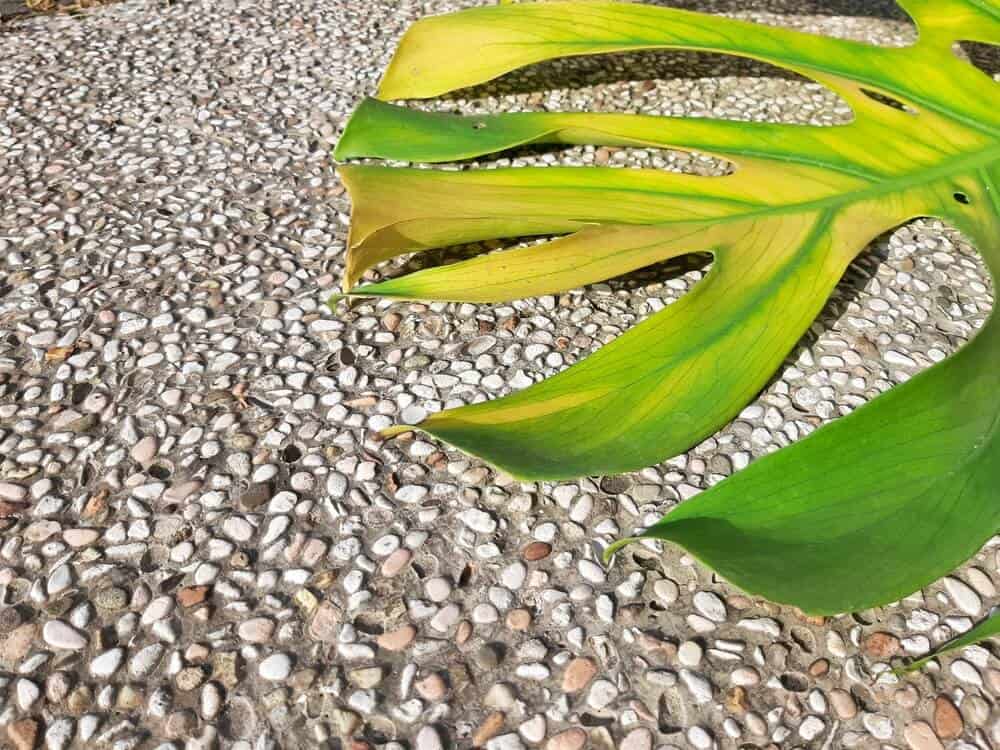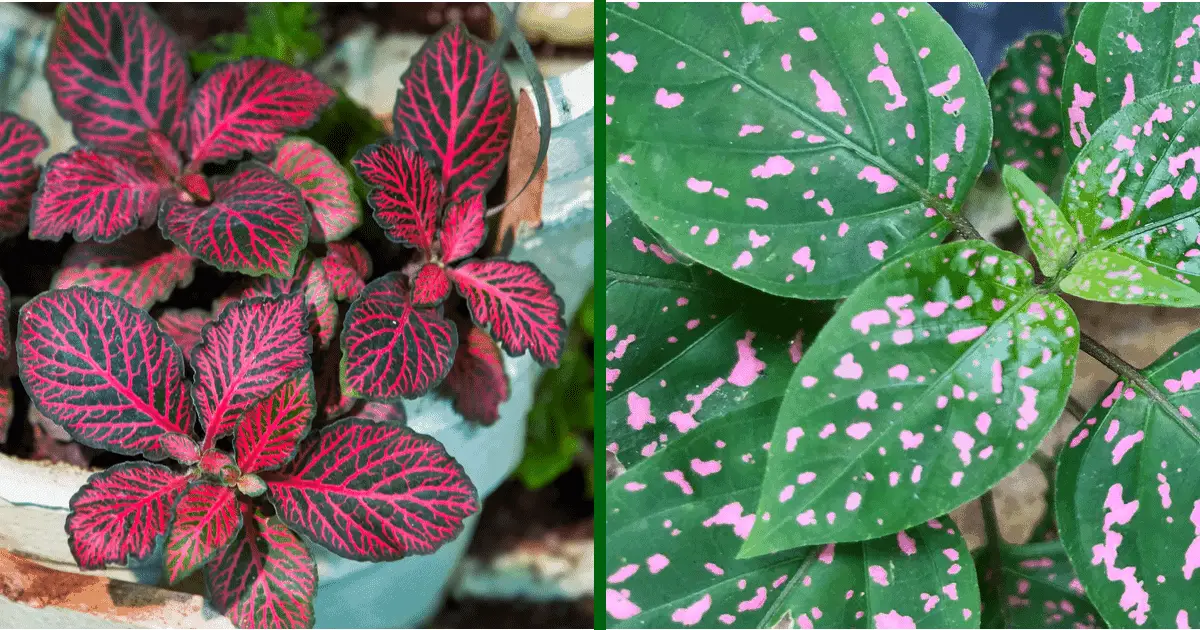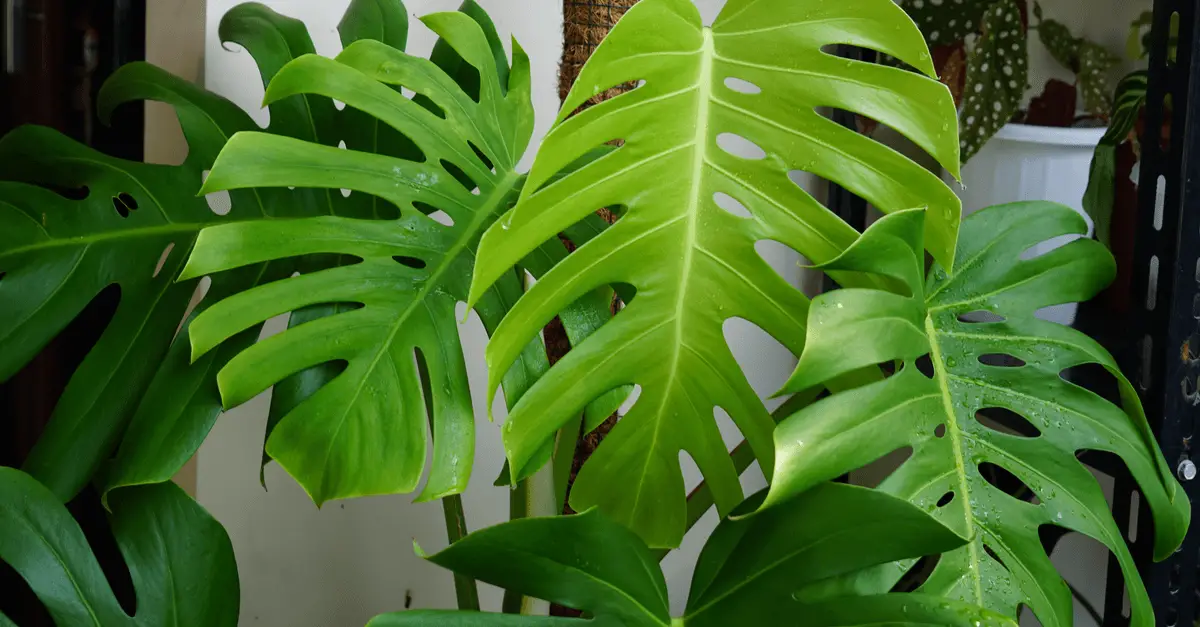It is natural for plants to shed older yellow leaves and it does not always mean that your plant is dying.
But yellow leaves can be a warning of something wrong happening. You cannot reverse yellowing leaves.
One major reason behind Swiss cheese plant yellow leaves is overwatering. It generally takes one week for the plant to recover from overwatering.
Monstera leaves turning yellow can be because of improper light, watering, and fertilizer habits. Transplant shock or stress due to extreme temperatures also causes the leaves to turn yellow. Yellowing is also caused by manganese, nitrogen, and zinc deficiencies.
Why Is My Monstera Turning Yellow?
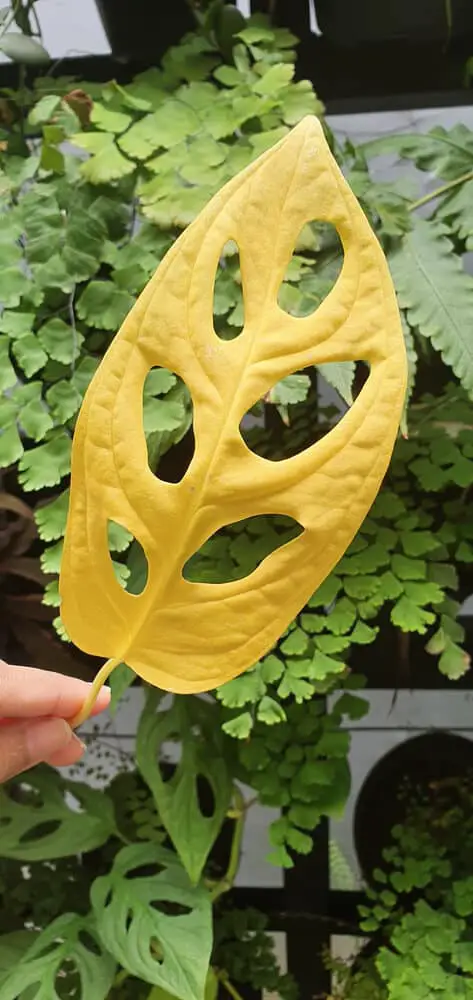
The leaves of your Monstera plant turning yellow can be natural and could also be due to some stress-related factors.
Let us discuss them in detail. Examine the cause in detail and then take the necessary steps.
Overwatering
Overwatering is the topmost cause of Monstera leaves turning yellow.
Although Monstera is a tropical plant, it is susceptible to root rot due to overwatering. Soggy soil conditions with poor drainage make the problem worse for the plant roots.
To check whether your Monstera is overwatered or not is to observe the plant and its soil. When overwatered, the leaves droop and develop brown patches, and the soil develops fungus on top. Your plant will need repotting to get rid of the fungal infection.
If you notice the leaves yellowing, check the soil regularly. Touch the soil and use the finger knuckle test to see whether the plant needs water or not. Insert your finger into the second knuckle.
If the soil feels moist to the touch, hold back on watering. Check back after a few days and water only when the soil feels dry to the touch.
Underwatering
Although Monstera is quite sturdy, it tends to get finicky when it comes to watering.
Underwatering is another cause of this tropical plant’s leaves going yellow. The soil becomes hard and dry when underwatered. This problem, however, is easier to treat than overwatering.
When the plant is underwatered, its leaves droop, curl, and start turning yellow. Eventually, they become dry, crispy, and brown. To prevent watering problems, always check by sticking your finger in the soil. If it comes out bone dry, the plant needs water.
If the plant is going into stress because of underwatering, keep the plant in a bright spot. Water it thoroughly such that water comes out of the drainage holes at the bottom. Be frequent with watering, especially during the summer months.
Low Humidity
Low humidity along with underwatering can cause the edges of the leaves to turn brown and crisp. It leads to the yellowing of leaves.
Keep the humidity levels high by misting the plant regularly in summer and by using humidifiers and humidity trays.
A humidity tray is an inexpensive way of dealing with low-humidity conditions. Prepare a humidity tray by filling a shallow tray with some water and pebbles. Keep the pot above the tray.
As the water evaporates, the plant will absorb the required moisture.
Temperature Stress
The Swiss Cheese Plant is a tropical plant belonging to the rainforests where it grows in moderately warm and humid environments.
It is not made to handle extreme temperatures. Both high and low temperatures can cause stress in the form of yellowing.
High Temperatures
Monstera needs bright, indirect light to grow well. If you expose it to direct and harsh sunlight, especially during noon, it will go under stress.
High temperatures in summer cause the leaves to turn yellow and crisp with browning of edges.
The younger and newer leaves on top are more prone to yellowing due to exposure to high temperatures. Protect the plant from such stress by misting it daily in summer to regulate the temperatures.
Avoid exposing the plant to temperatures higher than 75 degrees Fahrenheit.
Low Temperatures
Just like hot summery weather, temperatures lower than 50 degrees Fahrenheit are bad for Monstera’s growth. The leaves will start turning yellow if the plant is kept in frost for longer periods.
In near-freezing and frosty weather outside, shift the plant indoors to a warm spot. Keep the plant in a place inside where it can receive bright, filtered sunlight during the day.
Stress Due To Transplanting
If you have recently repotted your Monstera, be extra careful to prevent it from going into shock due to repotting.
Monstera deliciosa leaves tend to turn yellow because of transplant shock. The leaves droop and starting with the oldest leaves, they begin to turn yellow.
The reasons behind transplant stress could be repotting at the wrong time of the year and a sudden change in soil mix after a long time. After transplanting, keep the plant in the same spot as before to minimize its stress.
Avoid both overwatering and underwatering. Do not fertilize the plant until it becomes acclimatized to the new conditions and starts to show new growth.
Light Conditions
Too much or lack of sufficient light can cause the plant to go under stress and yellowing of leaves.
In the wild, Monstera grows under other tall trees that protect it from direct sunlight. It only receives filtered sunlight. Direct sunlight burns the leaves causing yellow and brown patches.
Try to create such an environment at home where the plant receives bright, dappled light during the day. Avoid keeping it in very low light conditions too as it causes the plant to wilt and show stunted growth.
Pests
Monstera under stress is susceptible to pest attacks. Pests such as spider mites, thrips, and scale are the major troublemakers among many others.
If left untreated for long, these pests can cause difficulty for your plant and may even kill it.
Scale Insects
Scale insects are difficult to identify at first because they are immobile and hard to see with the naked eye. Adult insects can lay hundreds of eggs and usually target the stems and leaf joints.
Inspect the thinner leaves and stems of the plant for scale infestation and treat them as fast as possible. Once the plant is under scale infestation, you will have to treat the entire plant for it.
If the plant is heavily infested, you might just prune the affected parts instead of treating them.
In minor infestations, rub an alcohol-dipped cotton swab on the affected regions. Alcohol dissolves their shells and kills them quickly. You can also use insecticidal soap for more extensive attacks.
Spider Mites
Spider mites feed on the sap of the tissues. These are quite mobile and can easily travel from one place to another. A sign of their presence includes the yellowing of leaves and browning at the leaf edges.
Spider mites need warm and dry environments to thrive. To prevent their growth, keep the humidity and moisture levels high around the plant.
Their treatment is fairly easy if the infestation is not a lot. Wipe the leaves with alcohol to kill them or spray insecticidal soaps in serious attacks.
Thrips
Thrips are small and difficult to spot unless they have spread to many parts of the plant. They suck the moisture from the plant making them dry and the leaves brown. Heavy infestations can kill the plant.
They are generally found on the undersides of the leaves and look like tiny, white footballs.
If the plant is heavily infected, pruning works best. Quarantine the plant for two to three weeks to protect other houseplants.
Neem oil is quite effective against thrips. It is organic, environmentally friendly, and safe for both humans and pets. Use horticultural or insecticidal soaps in case of moderate attacks.
Mealybugs
Mealybugs are tiny fuzzballs that suck juices out of the leaves. They cause spotting and discoloration on the leaves and leave behind sticky honeydew. Spotting honeydew is a clear sign of mealybugs.
Rub alcohol-dipped cotton swabs on the affected leaves to get rid of mealybugs. Alcohol kills them instantly. You can use a neem oil spray to kill any hidden mealybugs.
Fungus Gnats
Fungus gnats do not attack the plant directly. They get attracted to the fungus in damp soil conditions.
Fungus gnats may not kill the plant but their larvae feed on the plant roots which can cause the plant to wilt over time. They are black and look like tiny mosquitoes.
To treat the problem, make the environment unlivable for fungus gnats. Since they prefer damp soil, allow your Monstera to become considerably dry in between waterings.
Once the conditions are dry, their population will go down significantly. Avoid watering from the top of the plant. Instead, water the soil. Use yellow sticky traps to catch some gnats.
Diseases
Diseases such as powdery mildew, anthracnose, and leaf spots cause discoloration of the leaves.
Let us take a look at them in detail.
Fungal Leaf Spots
When the plant is infected by fungal leaf spots, the fungus starts to eat the leaf from outside. It causes a cluster of yellowing spots on the affected leaves. It thrives in humid conditions.
To prevent leaf spots from spreading, remove the affected part. Increase the air circulation around the plant to prevent this problem.
Powdery Mildew
Powdery mildew is caused by a fungus that produces a white coating on the leaves. If left untreated for longer periods, it causes the leaves to turn yellow and dry out.
Like other fungal infections, treat it by removing the affected parts of the plant. Use fungicides in severe cases. Improve air circulation around the plant if the humidity levels are high.
Anthracnose
Anthracnose is a fungal disease that causes the yellowing and browning of leaves. It causes discoloration and brown lesions on the affected leaves. The fungus spreads rapidly in damp environments where airflow is minimum.
To prevent the problem, keep the moisture low and air movement high. Remove the infected part and spray fungicide on other parts to control the spread.
Overfertilization
Monstera prefers well-balanced fertilization. Overfertilization causes salt build-up around the roots. Excessive salts in the soil around the roots cause root burn and in severe cases kill the plant.
Symptoms of overfertilization include the development of white crust on topsoil, leaf edges turning brown and crispy, and stunted growth.
To fix the problem, flush the soil thoroughly with a hose until the water runs out of the drainage holes.
Nutrient Deficiency
While overfertilization causes root burn, your plant might face nutrient deficiency if under-fertilized.
The plant shows stunted growth, browning, and burning of leaf edges when it lacks essential nutrients like nitrogen, phosphorus, and potassium. Yellow leaves are commonly caused due to deficiency in either nitrogen or potassium.
Abnormal yellowing of the foliage is called chlorosis. It happens when the leaves lack chlorophyll. Sometimes, the nutrients are not available to the plant because of high soil pH and poor drainage.
Keep the soil rich by adding organic matter to it and feed the plant with a well-balanced, organic fertilizer regularly to avoid such nutrient deficiencies.
New Environment
Sometimes, changing the location of the plant can cause the leaves to turn yellow. A sudden shift from outdoors to indoors and vice versa makes the plant go into stress.
To prevent this problem, do not shift the plant unnecessarily. Avoid frequent shifting and movement of the plant.
The sudden change in environment from a cold spot to a warm one and vice versa confuses the plant. It does not get sufficient time to adjust to the new surroundings. Keep the plant in a spot for some time before changing its location again.
Yellowing of Old Foliage
Yellowing of the older leaves at the bottom of the stems is a natural process.
Sometimes yellowing of the leaves is not a sign of stress or disease. The plant undergoes a natural process when the older leaves turn yellow over time.
Remove these leaves by cutting them off.
What To Do?
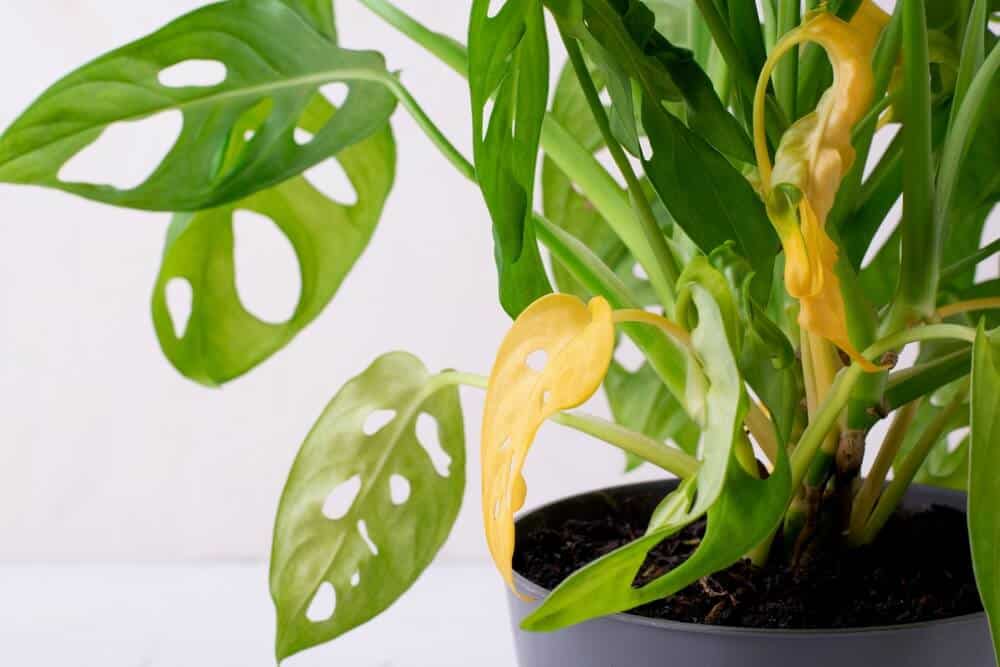
Monsteras develop yellow spots on their leaves due to many reasons discussed above.
But the problem can be fixed if detected early.
Can You Fix Yellowing Monstera Leaves?
It is not possible to turn a yellow leaf back to green. The plant spends its energy on producing new leaves and not on yellow leaves.
Sometimes, the leaf may have some yellow and some green patches. You can cut off the yellow part and let the green portions be.
If the entire leaf has turned yellow, remove the leaf by cutting it off. It will help the plant to focus its energy on producing new growth and avoid the unsightly appearance of yellow foliage.
Should You Cut Off Yellow Leaves?
If the leaves are affected by pests and diseases, immediately remove and throw away the yellow leaves. If you do not cut these off, the pests find it easy to spread and feed on other healthier parts of the plant.
If the yellowing is due to transplant stress or root rot, let the leaf turn completely yellow before cutting it off. It is safe to remove a few yellow leaves from the plant from time to time.
Frequently Asked Questions
Let us get into some frequently asked questions.
Should I Mist My Monstera?
Monstera belongs to the rainforests and thrives in warm conditions with high humidity. If you live in a dry area, mist your Monstera daily in summer to keep the humidity levels high.
Dry conditions can attract spider mites. Keep a humidifier or a humidity tray to maintain the humidity levels.
If you live in a tropical region, you do not need to mist the plant daily. The environment is perfectly suited for plants like Monstera.
Misting too much can, however, cause fungal infections and diseases. Humid and damp conditions are a breeding ground for pests like fungus gnats.
How Often Should I Water Monstera?
The watering schedule depends on several factors such as temperature, humidity, and light. Under bright light, high humidity, and moderate temperatures, you can water your plant twice a week in summer and once a week in winter.
If the temperature is high and humidity low, the watering frequency will go up. Reduce the frequency during the winter months as the plant goes into dormancy and does not need too much water to grow.
This schedule is not fixed, though. To avoid issues related to overwatering and underwatering, always check the soil by touching it. Water the plant only if it feels dry to the touch. Avoid creating damp soil conditions as it leads to root rot.
Check by inserting your finger in the soil. It is the most effective method to avoid the problems of overwatering and underwatering. Use well-draining soil rich in organic matter to grow your plants.
Conclusion
Monstera can have yellow leaves due to several reasons. But if you identify the reason behind yellowing at the right time, it will become easier to treat the issue. Maintain the basic growth requirements of the plant and you can easily prevent the problem of yellowing. Save the plant before it is too late by following our tips!
